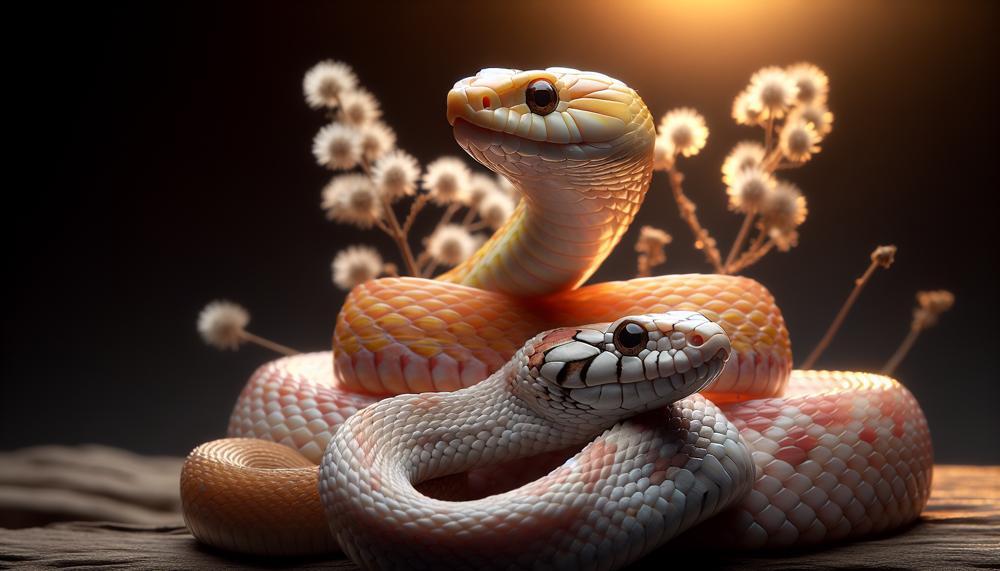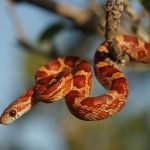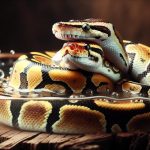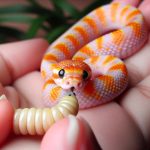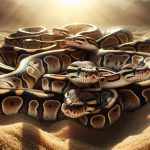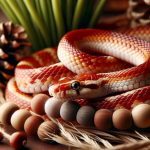Do you find yourself entranced by the enigmatic ways of snakes? Are you drawn to their sinuous movements and piercing gaze? If so, get ready to delve deeper into the world of corn snakes and their crepuscular tendencies.
-
- The term “crepuscular” may sound unfamiliar, but it simply means being active during dawn and dusk. And many creatures, including our beloved corn snakes, share this distinctive trait.
- Known for their striking colors and gentle demeanor, these magnificent serpents hold many secrets waiting to be unraveled.
- From their hunting methods to their preferred habitats, we’ll uncover the mysteries behind corn snake behavior during the twilight hours.
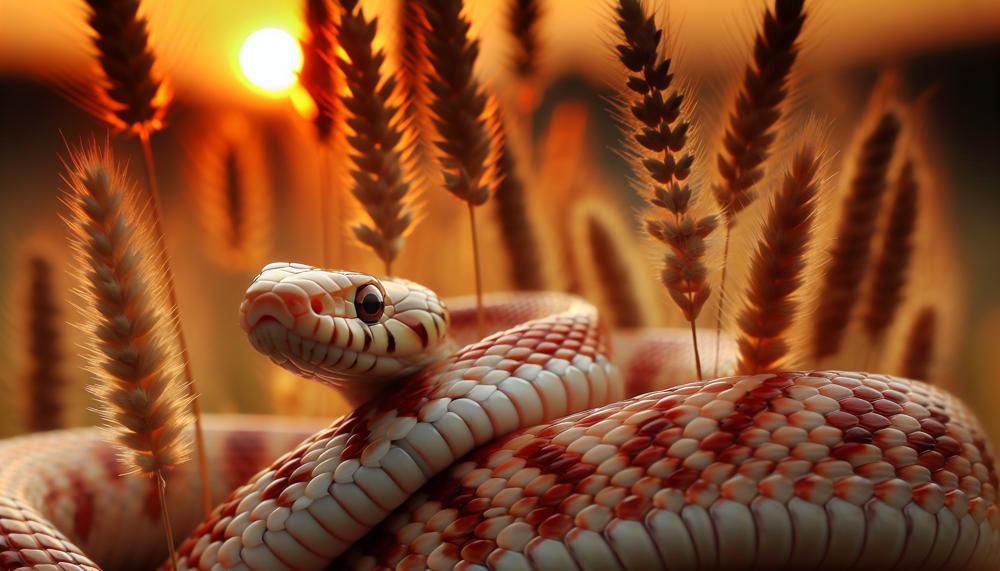
- But why do they choose this specific time of day to be active? What advantages does it offer them in the wild?
- Join us on this journey as we embark on an exploration of the intriguing crepuscular behavior of corn snakes. Brace yourself for a deeper understanding of these mesmerizing creatures that will leave you spellbound.
Contents
Are corn snakes crepuscular?
Yes, corn snakes are crepuscular, which means they are most busy in the morning and evening. They don’t come out at night; instead, they hide and sleep during the day.
Corn snakes are from the southeast United States. They live in fields, farms, and pine woods there. They hunt small mammals, birds, and other snakes at dawn and dusk because their blood is cold.
Corn snakes often climb trees or old buildings to get a better view of their surroundings and save energy.
When it gets too hot in the summer, corn snakes may change their schedule to be active at dawn or dusk.
Corn Snakes are Crepuscular and not Nocturnal
Crepuscular activity refers to the behavior of animals that are most active during dawn and dusk. This is observed in corn snakes, as they utilize this time to hunt for food and regulate their body temperature.
In contrast, nocturnal activity refers to animals that are most active at night. While corn snakes are mainly crepuscular creatures, they may also display activity during the nighttime hours outside of their peak periods.
Furthermore, various factors, such as lighting, temperature, and handling, can influence a corn snake’s activity patterns while in captivity. It is crucial for keepers to be aware of these distinctions in order to provide appropriate care and closely monitor their snake’s health.
I once observed my corn snake, named Sunny, displaying crepuscular behavior by actively searching for food at dawn. He was slithering around his enclosure with his tongue flicking out, sensing his surroundings and looking for prey. It was fascinating to witness his natural instincts kick in during this time of day.
While corn snakes are known to be crepuscular and not nocturnal, it is important to note that they may still exhibit some activity at night. This could be due to external factors such as artificial lighting or changes in temperature within their habitat.
As responsible keepers, we must pay attention to these variations and make any necessary adjustments to ensure our snakes are thriving.
Where do Corn Snakes Sleep?
Corn snakes do not have a designated sleeping spot, but instead, they sleep in various areas of their habitat depending on the time of day and their unique preferences.
As primarily nocturnal creatures, they are most active at night and will often seek out a cozy spot to rest during the day. This can include burrows, crevices, or even curled up in a hiding place within their enclosure.
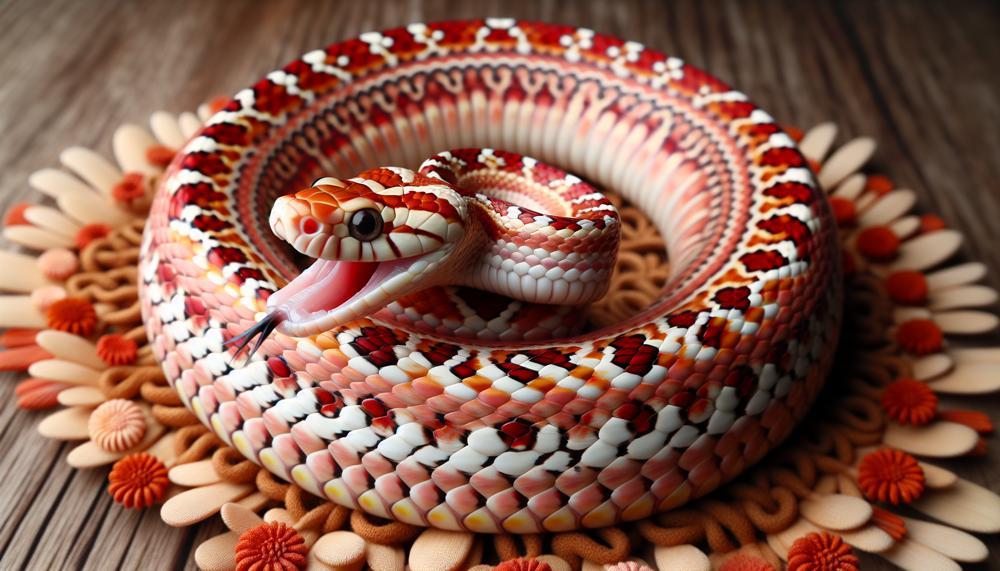
However, corn snakes are also known to be crepuscular, meaning they are most active during dawn and dusk. During these times, they may choose to sleep in a different area of their habitat, such as basking under a heat lamp or exploring their surroundings.
In captivity, it is crucial to provide corn snakes with a diverse range of hiding spots and climbing structures for them to choose from when they are ready to sleep. This mimics their natural environment and allows them to feel secure while resting. Maintaining appropriate temperature and lighting levels is also essential to promoting their natural sleeping patterns.
Handling can significantly impact a corn snake’s sleeping habits. Excessive handling or handling at inappropriate times can cause stress and disrupt their sleep schedule.
Therefore, it is best to handle corn snakes during the evening or early morning when they are most active and allow them to rest during the day.
Corn Snake Hunting Behavior
Corn snakes are mainly known for their hunting behavior during dawn and dusk, as they are crepuscular animals. These are the times when they are most active and actively searching for prey in their natural habitat. However, a number of variables, such as temperature and food availability, can have an impact on their hunting behavior when kept in captivity.
In the wild, corn snakes are opportunistic predators and will take advantage of any prey that comes across their path during their active periods. They have excellent vision and a keen sense of smell, allowing them to successfully hunt for a variety of prey, including rodents, birds, lizards, and insects.
But even in captivity, corn snakes can adjust to a diurnal schedule if they feel comfortable and secure in their environment. This means they may also be active and hunting during the day. However, their natural inclination is to be most active during dawn and dusk.
To ensure that your pet corn snake’s hunting behavior remains healthy and natural in captivity, it is essential to provide them with proper hiding spots and regulate their sleep cycle by mimicking natural lighting patterns. This helps maintain their circadian rhythm and allows them to hunt at their preferred times.
How do Snakes Sleep if they have no Eyelids?
Despite lacking eyelids, corn snakes have developed several behaviors and physical characteristics to deal with this lack of protection while they sleep. For example, they are crepuscular creatures, meaning they are most active at dawn and dusk. This allows them to take advantage of the low light conditions during their preferred sleeping time.
Additionally, corn snakes have a preference for sheltered areas when sleeping. This could be a small crevice or hiding spot that provides some level of cover and protection from potential threats. These sheltered areas also help regulate the temperature around them, keeping them comfortable and aiding their sleep.
Corn snakes have the ability to regulate their blood flow while sleeping. This means that they can lower their blood pressure and heart rate, which helps conserve energy and allows them to rest more easily. In fact, some experts believe that this adaptation helps them remain alert while sleeping, as they can quickly activate their body if needed.
Lastly, corn snakes are known to sleep with one eye open. This is possible due to their unique eye structure, where each eye has a transparent scale covering it, allowing them to see even when closed. This adaptation not only helps them stay alert but also protects their eyes from potential harm.
Owners Should Monitor the Sleep Behavior of Corn Snakes in Captivity
This can be done through various methods, such as observing their activity levels, sleeping positions, and feeding schedules, as well as using temperature monitors and avoiding disturbance during their sleep cycle.
Through monitoring a corn snake’s activity levels during the day, owners can determine if their snake is exhibiting normal behavior or showing signs of stress or illness. This can provide valuable insights into the snake’s overall health and help identify any potential issues that may require professional treatment.
Additionally, noting how a corn snake sleeps, such as in a tight ball or stretched out, can help owners assess the snake’s comfort level and identify any potential health issues. Tracking feeding schedules is also crucial, as corn snakes typically eat at night.
By keeping track of when they eat, owners can determine if their snake is exhibiting normal feeding behavior or showing signs of stress or illness.
Using temperature monitors in the snake’s enclosure can also provide important information about their natural sleep patterns and behavior. By tracking temperature changes, owners can determine when their snake is most active or sleeping. This can give them a better understanding of their snake’s natural sleep patterns and behavior.
Lastly, it is important for owners to avoid disturbing their corn snake during its sleep cycle. This can prevent stress and potential health issues, as it allows the snake to maintain its natural sleep patterns. If an owner notices any irregularities or concerns with their snake’s sleep behavior, it is crucial to consult a reptile veterinarian for professional advice and treatment.
Conclusion
In conclusion, it is clear that corn snakes possess a unique and fascinating crepuscular nature.
Unlike nocturnal animals, they are most active during the twilight hours of dawn and dusk, adding to their allure as pets. Their hunting behavior, sleeping habits, and lack of eyelids all contribute to their ability to thrive in the wild and in captivity.
By delving into the mysteries of their crepuscular behavior, we can deepen our admiration for these captivating serpents.

